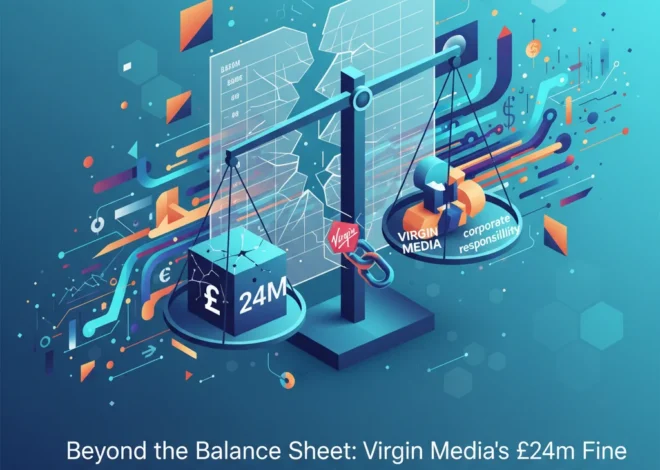
Beyond the Missing Dress: Decoding the Economic Fallout of America’s Shipping Crisis
A Tale of Two Crises: A Personal Catastrophe and a Global Economic Warning
For one bride-to-be, the dream of a perfect wedding day is hanging by a thread—not in a closet, but lost somewhere in the labyrinthine chaos of the US shipping system. Her wedding dress, a symbol of a future celebration, has become a casualty of a much larger, more systemic failure. As she told the BBC, “I fear my wedding dress is destroyed.” This personal story, while heartbreaking, is more than just an unfortunate anecdote. It’s a stark, human-scale indicator of the immense pressure fracturing global supply chains, with profound implications for the U.S. economy, the stock market, and long-term investing strategies.
What we are witnessing is not merely a backlog of packages. It is the consequence of a perfect storm: a flood of international e-commerce parcels, colliding with new, complex customs and tariff regulations. For business leaders, finance professionals, and investors, understanding the mechanics of this crisis is crucial. The story of a single missing package can reveal the hidden vulnerabilities in corporate balance sheets, the operational risks in logistics stocks, and the emerging opportunities in technologies designed to bring order to this chaos.
The De Minimis Dilemma: How a Legal Loophole Became an Economic Bottleneck
At the heart of the current turmoil is a U.S. trade provision known as Section 321, or the “de minimis” rule. This rule allows packages valued under $800 to enter the United States without facing duties or taxes, and with significantly less paperwork. Originally intended to facilitate low-value tourism purchases, it has been supercharged by the rise of e-commerce giants like Shein and Temu. These companies have built entire business models around shipping vast quantities of individual, low-cost items directly to consumers, all fitting neatly under the $800 threshold.
The numbers are staggering. In 2023, more than one billion de minimis shipments entered the U.S., a dramatic increase from previous years. This deluge has overwhelmed U.S. Customs and Border Protection (CBP) and the private logistics companies tasked with handling them. In response to concerns about unfair competition for domestic retailers and the potential for illicit goods to slip through, the CBP has intensified its scrutiny. This crackdown, while well-intentioned, has created a massive bottleneck, leaving millions of packages—from fast fashion to irreplaceable wedding dresses—in a state of limbo.
This situation presents a classic clash of economics: the drive for frictionless global commerce versus the necessity of regulatory oversight and fair trade. The fallout is a lesson in operational risk that should be on every investor’s radar.
Mapping the Financial Contagion: From Warehouse Floors to Wall Street
The disruption in shipping ports and warehouses doesn’t stay there; it ripples outward, touching nearly every corner of the finance world. For investors and business leaders, it’s essential to trace these shockwaves to understand the true cost of the crisis.
1. Logistics and Shipping Stocks Under Pressure
Companies like FedEx (FDX), UPS (UPS), and DHL are on the front lines. While a surge in volume might seem positive, the reality is more complex. The increased scrutiny and administrative burden drive up operational costs. Delays damage reputations, and the handling of millions of small, low-margin packages is less profitable than traditional bulk freight. Investors in this sector must now price in a higher degree of regulatory and operational risk. A sudden change to the de minimis rule could vaporize a significant revenue stream for companies reliant on this e-commerce traffic, impacting their performance on the stock market.
2. Retail and E-commerce: The Inventory Gamble
For retailers, both large and small, inventory is everything. The current chaos creates a dual threat. Firstly, it makes “just-in-time” inventory models—a cornerstone of modern retail efficiency—extremely fragile. Secondly, it directly impacts customer satisfaction. The bride without her dress is unlikely to be a repeat customer. This erosion of consumer trust is a significant intangible asset risk. Companies heavily reliant on direct-to-consumer imports from Asia are particularly exposed. Their business models, built on speed and low cost, are now facing a fundamental challenge that could compress margins and dampen growth prospects.
3. The Broader Economic Impact
On a macroeconomic scale, these disruptions contribute to what economists call “frictional” inflation. Delays and increased shipping costs are eventually passed on to consumers. Furthermore, the uncertainty complicates international trade relationships and adds a layer of unpredictability to the global economy. It forces a reassessment of supply chain resilience, a conversation that has been ongoing since the pandemic but is now being highlighted in a new and urgent way.
Key Pressure Points in the Modern Supply Chain
The current crisis highlights several critical vulnerabilities. The table below breaks down the key stages, the challenges they face, and the resulting financial impacts.
| Supply Chain Stage | Primary Challenge | Financial & Economic Impact |
|---|---|---|
| International Manufacturing | Geopolitical tensions and trade policy shifts. | Increased cost of goods, risk of tariffs, need for supply chain diversification. |
| Cross-Border Logistics | Regulatory bottlenecks (e.g., de minimis rule scrutiny). | Higher shipping costs, delivery delays, margin pressure on logistics firms. |
| Customs & Ports | Overwhelmed infrastructure and increased inspection rates. | Demurrage fees, inventory holding costs, stock-outs for retailers. |
| Last-Mile Delivery | Customer dissatisfaction from delays and lost packages. | Brand damage, increased customer service costs, loss of future revenue. |
This framework demonstrates how a single point of failure—in this case, customs processing—can trigger a cascade of negative financial events across the entire value chain.
The Search for Solutions: Can Technology Rebuild Trust?
While the problem is rooted in physical logistics and policy, the most promising solutions may lie in the digital realm. This is where financial technology and adjacent innovations offer a path forward, presenting new opportunities for savvy investors.
The Promise of Blockchain in Logistics
One of the core issues is a lack of transparency. A package is scanned at multiple points by different entities, creating data silos and black holes where items can get “lost.” Blockchain technology offers a potential antidote. By creating a shared, immutable ledger, every stakeholder in the supply chain—from the manufacturer to the shipping company to the customs agent to the end consumer—could have real-time, verifiable information on a package’s location and status. This would not only reduce lost items but also streamline customs clearance by providing a trusted, tamper-proof digital record of an item’s origin and value. For the banking sector, this could revolutionize trade finance, automating payments upon verified delivery and reducing fraud.
Fintech and the Automation of Trade
A significant part of the current delay is administrative. New data requirements mean more paperwork, which is often handled manually. Fintech platforms are emerging to tackle this head-on. By using AI and API integrations, these platforms can automate the generation of customs declarations, calculate duties and tariffs in real time, and facilitate seamless cross-border payments. This area of financial technology reduces human error, speeds up processing, and lowers compliance costs, directly addressing the bottlenecks that are plaguing the system. Companies that successfully integrate these tools will gain a significant competitive advantage.
AI-Powered Predictive Analytics
Beyond tracking and payments, AI can help prevent these logjams before they start. Advanced algorithms can analyze global shipping data, weather patterns, and policy changes to predict future bottlenecks. Logistics companies can use this intelligence to reroute shipments proactively, and retailers can adjust inventory orders to avoid getting caught in the snarl. This represents a shift from reactive problem-solving to proactive risk management, a key theme for modern trading and investment analysis.
Conclusion: From Fragility to a Fortified Future
The plight of a single missing wedding dress has peeled back the curtain on the profound fragility of our global supply chains. It serves as a powerful lesson in economics, demonstrating how interconnected our world is and how quickly a breakdown in one area can cascade into a crisis for consumers, corporations, and the market as a whole.
For investors and business leaders, the message is clear: the era of prioritizing efficiency at the expense of resilience is over. The future belongs to companies that invest in technological solutions like blockchain and fintech, diversify their supply networks, and treat logistical strength not as a cost center, but as a core strategic asset. The chaos in today’s shipping lanes is more than just a headline; it is a fundamental stress test of the global economy. Those who understand its implications and adapt will be best positioned to navigate the turbulence and thrive in the more complex, challenging, and ultimately more resilient world that lies ahead.


